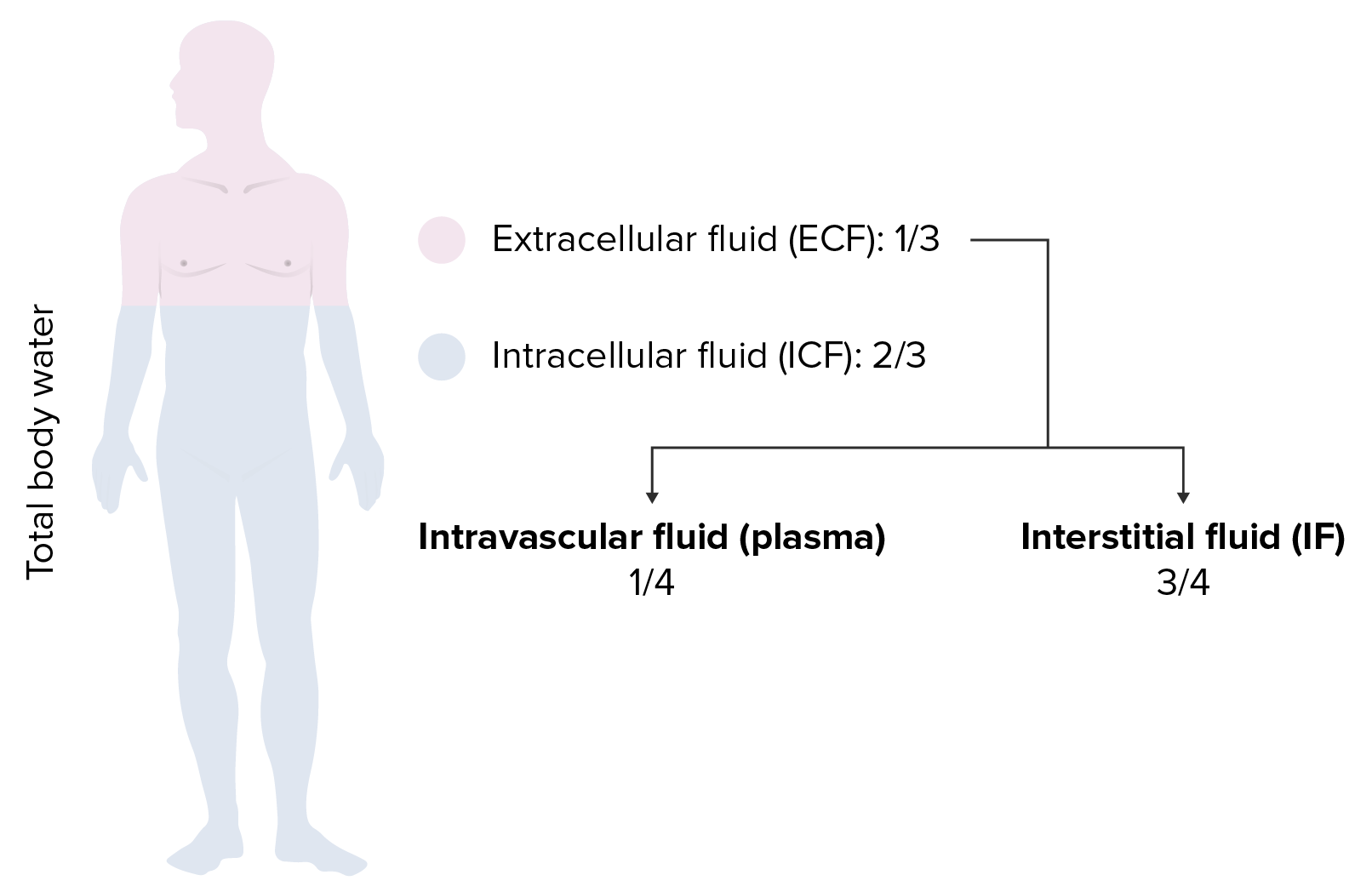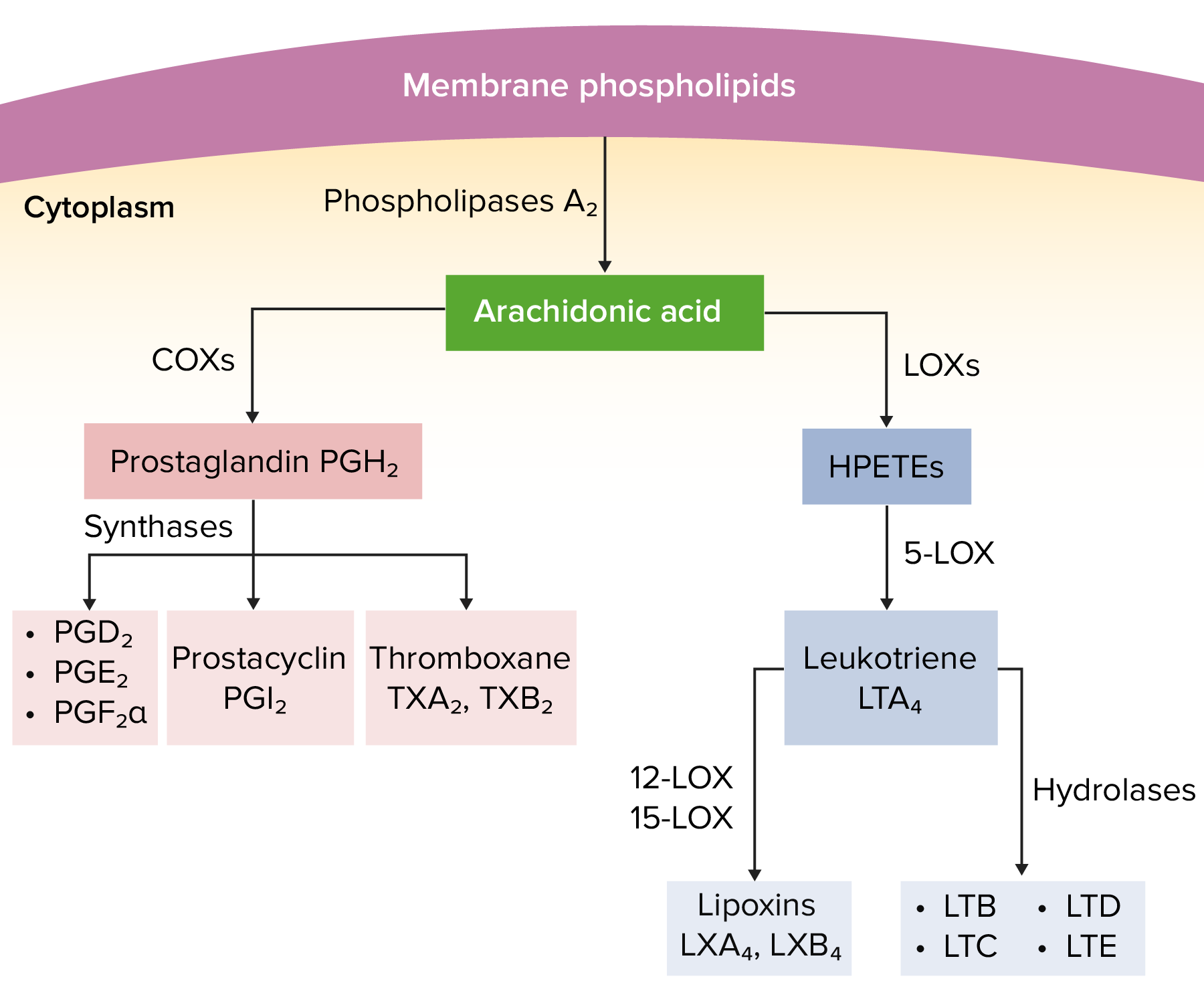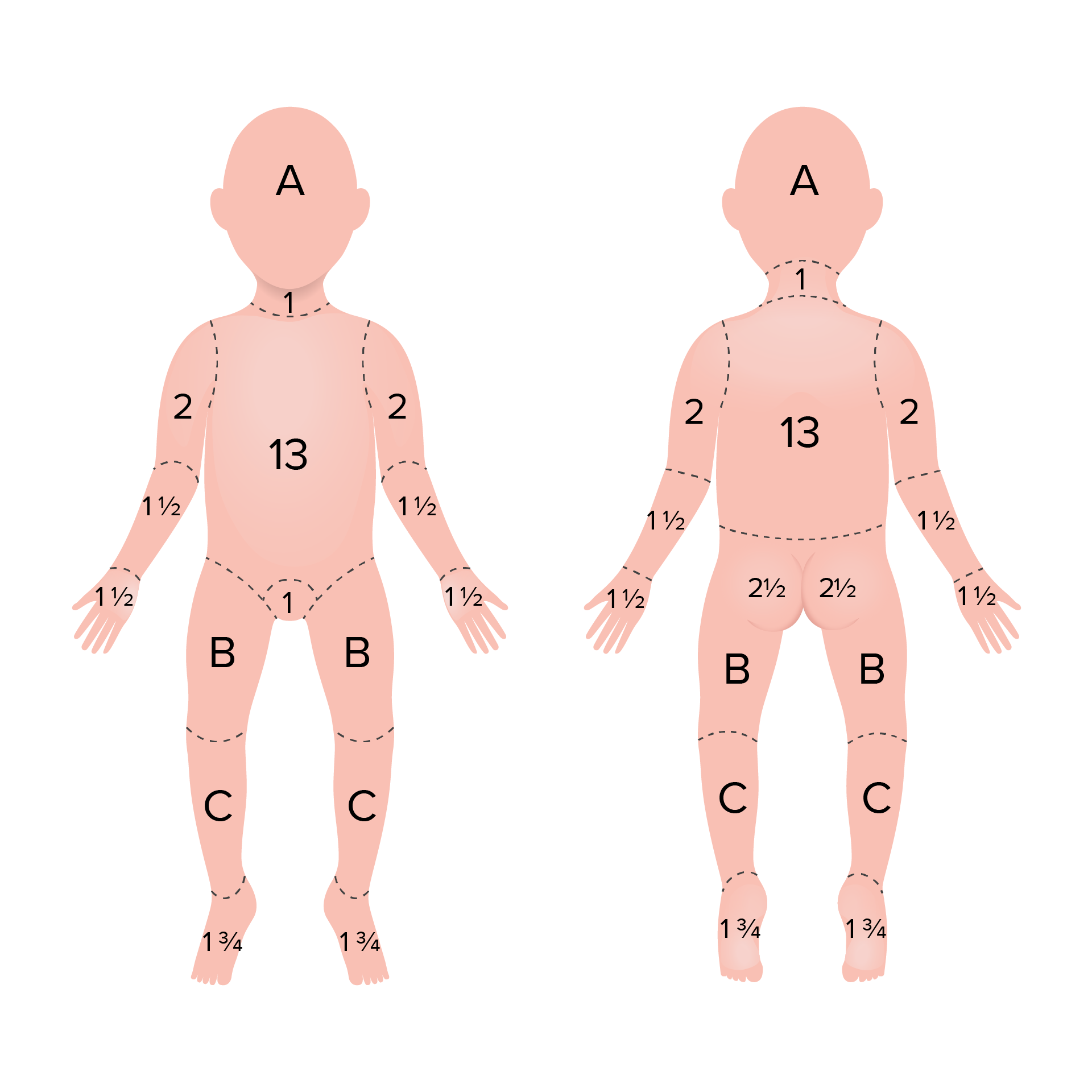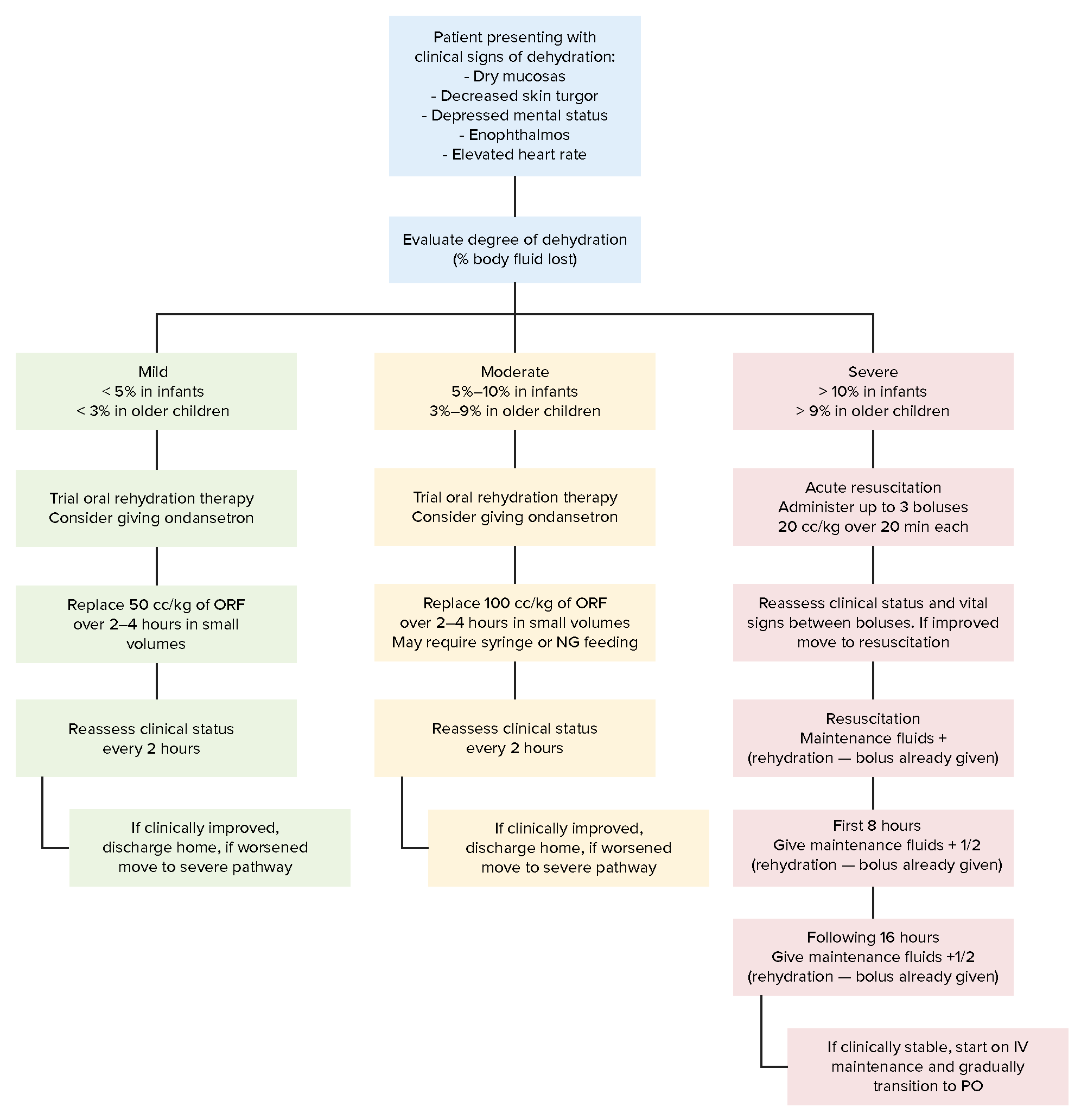Playlist
Show Playlist
Hide Playlist
Treatment of Burns
-
Slides Burns Pediatrics.pdf
-
Download Lecture Overview
00:01 So when we see adults, we often think of the rule of 9’s. 00:06 This is a way of assessing or guessing how much body surface area has been affected by burns because we’re going to use body surface area as a decision point as to whether these patients need to go to a burn unit or whether they should be okay. 00:21 And this rule of 9’s is, as you can see here, 9% is the head, 9% is each arm, the front and the back are each about 18%, and the legs are each about 18% of your total body surface area. 00:37 Unfortunately, children don’t work well for this because their heads are typically bigger. 00:42 So for children, we use a different number and you can sort of guesstimate it based on a table. 00:49 So the idea here is that as kids grow, their bodies are changing in terms of what percent surface area is accommodated by which age. 01:02 Always remember a palm is about 1% of you body surface area and that will hold true. 01:08 But generally, you can see here and this is not worth memorizing, but it’s worth knowing and you can look this up, is that as infants grow, their head becomes a lower and lower body surface area. 01:19 Likewise, this area or that area, and so there are tables and charts where you can guesstimate body surface area based on age. 01:29 So how do we treat burns? Well, for superficial, it’s just red. 01:34 There’s no blistering. 01:35 Generally, NSAIDs and cold packs for pain, and people should be just fine. 01:41 For the management of partial thickness burns, these are the ones that have blistered and peeled a bit, it’s important to clean them well to prevent any superinfection and dress them. 01:53 We will often use topical antibiotics and we may use something like Xeroform gauze, which is a little bit less adhesive. 02:00 If you put something that can dry out against that skin, it’s going to be very painful to remove it. 02:05 Generally, Vaseline-impregnated things. 02:08 The Xeroform adds a little antibiotic component to it. 02:11 And also, we’re going to provide these patients with pain medications. 02:15 So they really need pain medication to stay comfortable. 02:21 Next, for more extensive burns, generally outcomes are better if patients are sent to certified burn centers, especially nurses who have to provide very significant care are more trained on burns. 02:36 They’re going to do a better job for those patients, especially around things like dressing changes and other issues like that. 02:43 Generally, we’re going to stabilize them. 02:45 Then, we’ll do any surgical correction if it’s needed. 02:49 And they may require down the road cosmetic surgery as well to minimize the impact of scarring on their lives. 02:57 So that’s my review of burns in children. 03:00 Thanks for your attention.
About the Lecture
The lecture Treatment of Burns by Brian Alverson, MD is from the course Pediatric Emergency Medicine. It contains the following chapters:
- Rule of 9`s (Adolescents and Adults)
- Treatment of Burns
Included Quiz Questions
Which of the following is more appropriate in the initial management of an 8-year-old boy with a partial thickness burn on his trunk without any signs of inhalation or other types of injury?
- Cleaning and dressing of the wound
- Starting intravenous antibiotics
- Assessing for compartment syndrome
- Skin graft surgery
- Biopsy to determine the cause of the lesion
When assessing a child with a partial thickness burn, what percentage is a surface area equivalent to the patient's palm?
- 1%
- 2%
- 4%
- 3%
- 1.5%
Which of the following is NOT mandatory during the management of blistering partial thickness burns?
- Immediate surgical debridement.
- Appropriate wound cleaning and dressing
- Administration of topical antibiotics
- Administration of proper analgesics
What percentage of the surface area is involved in an adult patient with a partial thickness burn of the entire lower limbs?
- 36%
- 18%
- 9%
- 72%
- 27%
Customer reviews
5,0 of 5 stars
| 5 Stars |
|
5 |
| 4 Stars |
|
0 |
| 3 Stars |
|
0 |
| 2 Stars |
|
0 |
| 1 Star |
|
0 |







